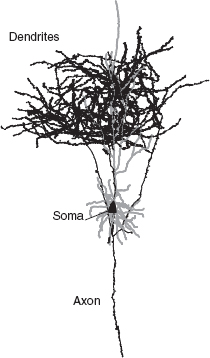7
Silicon Neurons

The event-based communication circuits of Chapter 2, the sensors described in Chapters 3 and 4, and the learning rules described in Chapter 6 all involved the use of spiking neurons. There are many different models of spiking neurons and many ways of implementing them using electronic circuits. In this chapter we present a representative subset of such neuromorphic circuits, showing implementations of both simple models and biologically faithful ones, following different circuit design approaches.
7.1 Introduction
Biological neurons are the primary components of networks in the brain. The neuronal membranes of these cells have active conductances which control the flow of ionic current between the various ionic reversal potentials and the membrane voltage on the membrane capacitance. These active conductances are usually sensitive to either the trans-membrane potential or the concentration of a specific ion. If these concentrations or voltages change by a large enough amount, a voltage pulse is generated at the axon hillock, a specialized region of the soma that connects to the axon. This pulse, called a ‘spike’ or ‘action potential,’ is propagated along the cell’s axon and activates synaptic connections with other neurons as it reaches the pre-synaptic terminals. Neuromorphic silicon neurons (SiNs) (Indiveri et al. 2011) are complementary metal oxide semiconductor ...
Get Event-Based Neuromorphic Systems now with the O’Reilly learning platform.
O’Reilly members experience books, live events, courses curated by job role, and more from O’Reilly and nearly 200 top publishers.

